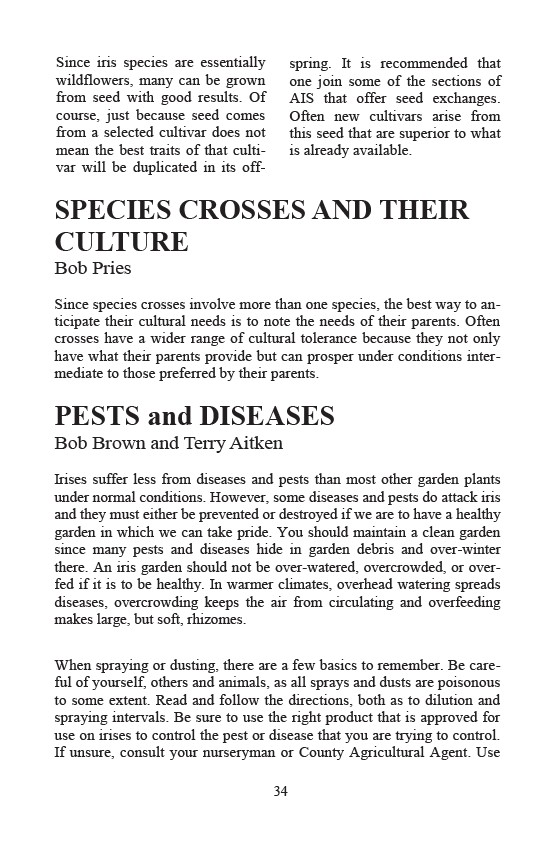
34
Since iris species are essentially
wildflowers, many can be grown
from seed with good results. Of
course, just because seed comes
from a selected cultivar does not
mean the best traits of that culti-var
will be duplicated in its off-spring.
It is recommended that
one join some of the sections of
AIS that offer seed exchanges.
Often new cultivars arise from
this seed that are superior to what
is already available.
SPECIES CROSSES AND THEIR
CULTURE
Bob Pries
Since species crosses involve more than one species, the best way to an-ticipate
their cultural needs is to note the needs of their parents. Often
crosses have a wider range of cultural tolerance because they not only
have what their parents provide but can prosper under conditions inter-mediate
to those preferred by their parents.
PESTS and DISEASES
Bob Brown and Terry Aitken
Irises suffer less from diseases and pests than most other garden plants
under normal conditions. However, some diseases and pests do attack iris
and they must either be prevented or destroyed if we are to have a healthy
garden in which we can take pride. You should maintain a clean garden
since many pests and diseases hide in garden debris and over-winter
there. An iris garden should not be over-watered, overcrowded, or over-fed
if it is to be healthy. In warmer climates, overhead watering spreads
diseases, overcrowding keeps the air from circulating and overfeeding
makes large, but soft, rhizomes.
When spraying or dusting, there are a few basics to remember. Be care-ful
of yourself, others and animals, as all sprays and dusts are poisonous
to some extent. Read and follow the directions, both as to dilution and
spraying intervals. Be sure to use the right product that is approved for
use on irises to control the pest or disease that you are trying to control.
If unsure, consult your nurseryman or County Agricultural Agent. Use